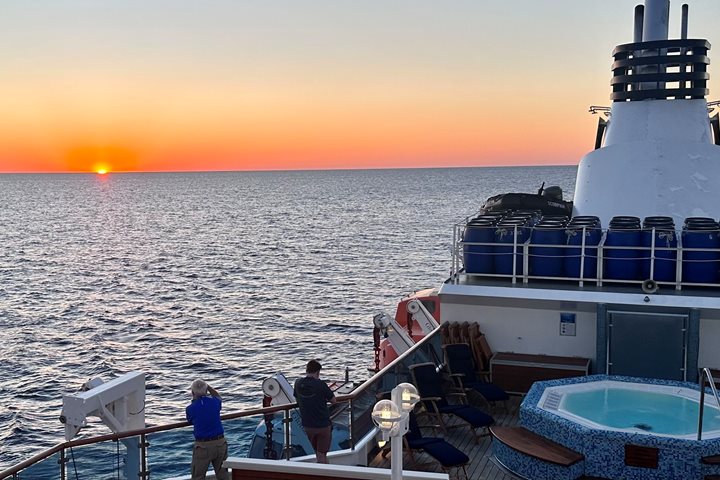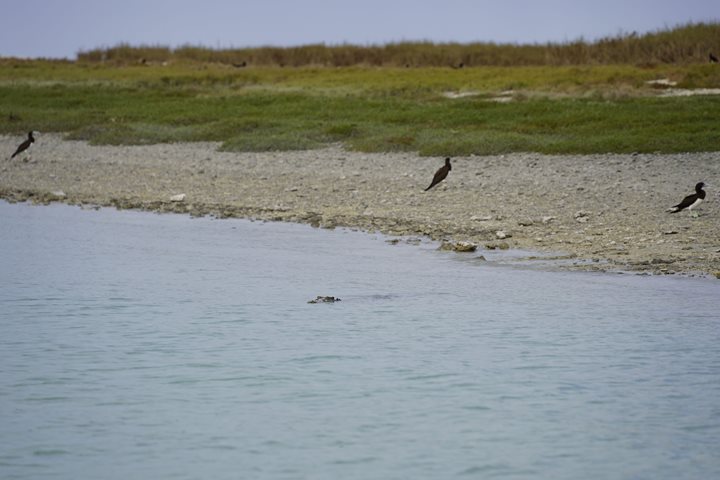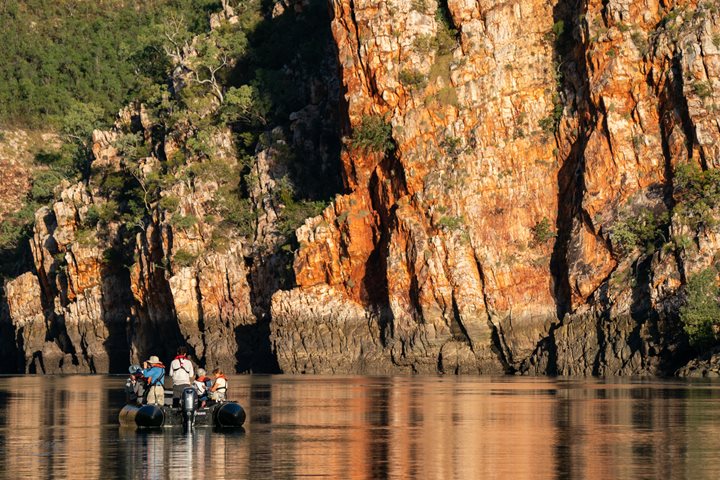A rainbow at sunrise, a very good omen, welcomed us into the day. The final remnants of last night’s impressive thunderstorm dropped gently on the calm surface of the sea. Our anchorage in Camden Sound was as stunningly scenic as we have thus far seen in our exploration of The Kimberley. Surrounded by ancient sandstone islands, substantial sand bars, and impressive mainland bluffs, there were visual treats no matter what direction we looked.
Montgomery Reef is an extraordinary geological formation. Made up of basalt, it covers approximately 400 square kilometers (154 square miles). Because of the extreme tides in the Kimberley region (up to ten meters or thirty-three feet at Montgomery Reef), the reef is subjected to repeated weathering and erosion by the constantly rising and falling ocean waters. At low tide, rivers and cascades drain the reef. Herons, egrets, sandpipers and other bird life come to forage on the intertidal life. Turtles, reef sharks, sea snakes and other animals make a living in the surrounding waters. At high tide, National Geographic Orion can sail over the reef.
To end our morning Zodiac exploration we landed on a sandbar (also to disappear at high tide) where we were greeted by hotel crew with greatly enjoyed refreshments.
Afternoon showed another face of The Kimberley. Landing under the impressive ancient sandstone bluff known as Raft Point, we headed ashore where we were welcomed by the traditional owners of the land. A hearty hike brought us to an exceptional rock art gallery. We were especially lucky to be accompanied by Donny, a senior traditional owner who explained the art and the beliefs of his society. He also has the great responsibility of maintaining the art, including retouching figures that have been weathered. We were able to watch Donny as he repainted some of the figures.
A green flash at sunset was the end bracket to a memorable day.









